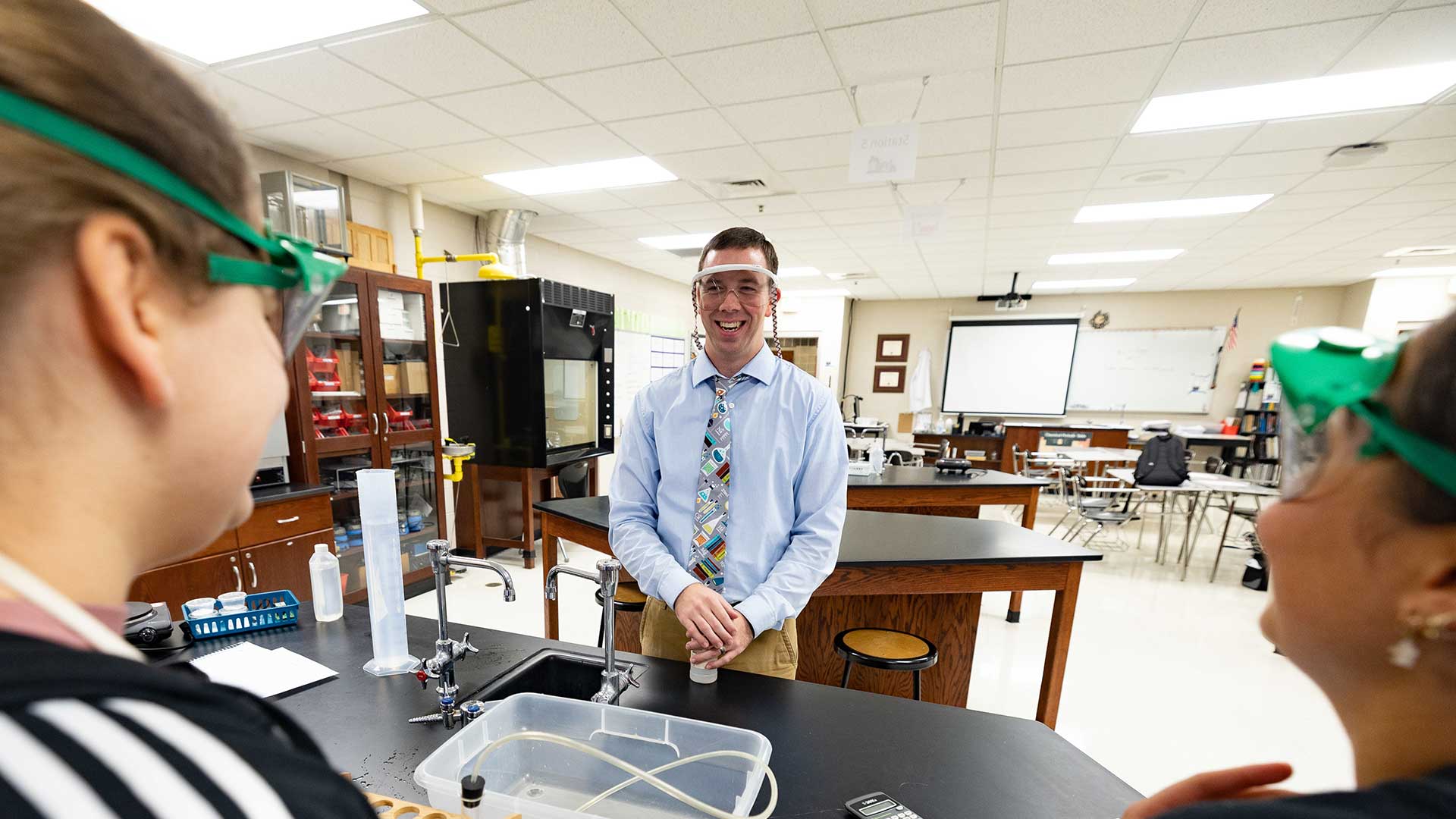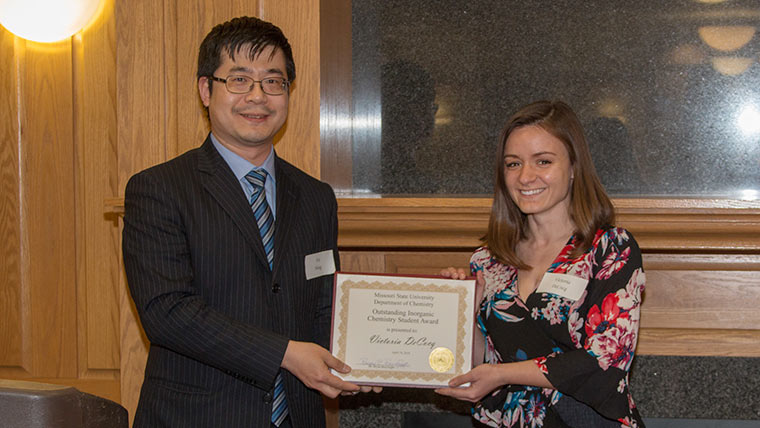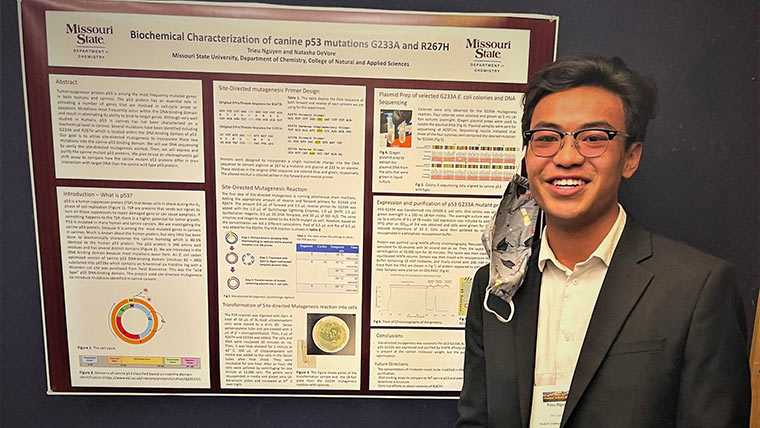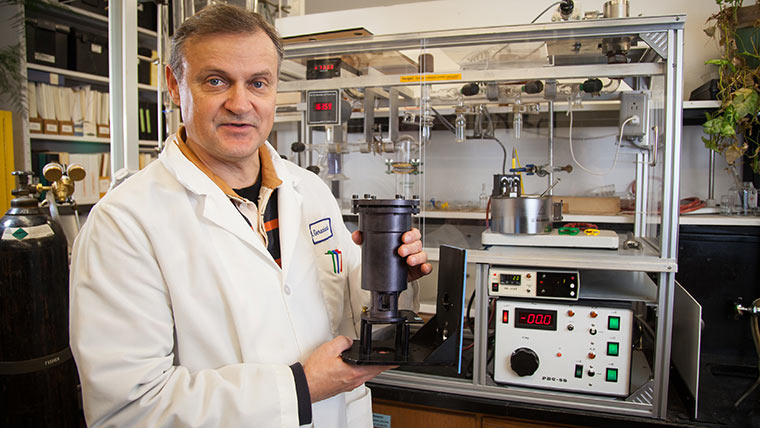Why take the chemistry education pathway?

- Increase your potential in less time – This pathway gives you a bachelor’s degree and master’s degree in just five years, rather than the typical six-year timeline.
- Become certified to teach – Gain the credentials you need to teach chemistry in grades 6-12.
- Enhance your skills and experience – With labs, hands-on research and student teaching, you’ll be ready to roll in your future classroom.
- Join an in-demand career field – Make an impact right away. Many graduates stay local and work in Springfield or nearby.
Chemistry education pathway
3 steps to finish
Become certified to teach chemistry at the high school or middle school level in three
steps. You’ll finish with a bachelor’s degree, a master’s degree and teaching certification.
Degree pairings
In the chemistry education pathway, you'll complete two degrees and other certification requirements.
- Start: Complete the Bachelor of Science in Chemistry (non-comprehensive) degree.
- Optional: Begin the accelerated graduate certificate in science content (if you want to teach dual credit).
- Finish: Complete the Master of Arts in Teaching (MAT) degree.
Along the way, you’ll apply for teaching certification.
Sample schedule
Earn your chemistry degree in four years. You’ll also complete a minor.
Sample schedule
Complete the MAT degree, which helps you earn teaching certification.
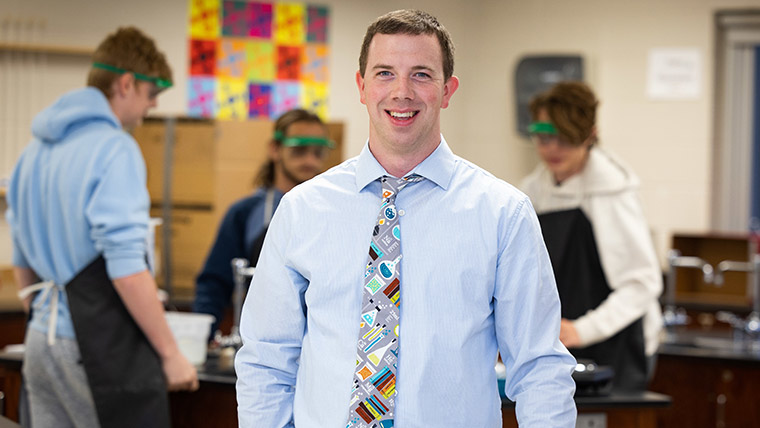
Careers and outcomes
Spark a love of chemistry in the next generation.
